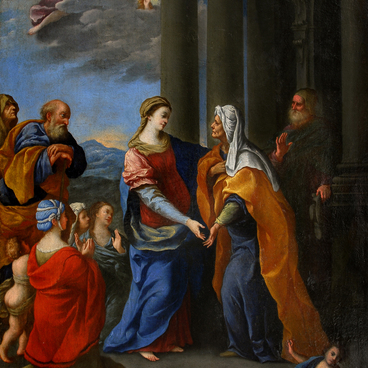Carl Goebel, also known as Carl Goebel the Younger, was a 19th-century Austrian painter.
He was born into the family of the history painter Carl Peter Goebel in Vienna in 1824. He received his first training from his grandfather, the painter and sculptor Joseph Klieber, who was the head of one of the schools at the Academy of Fine Arts Vienna and taught his grandson at a very early age.
When he was only fifteen years old, Goebel was awarded the Füger Prize for composition — the arrangement of separate parts of an artwork shaping a coherent idea. Subsequently, he continued his education with Joseph Mössmer, Carl Gsellhofer, and Leopold Kupelwieser. Goebel traveled a lot and worked in different countries. He was inspired by the painter Josef Kriehuber. Goebel produced topographical views of Vienna, animal pictures, hunting scenes, landscapes, and genre scenes. From 1855 onwards, Carl Goebel also worked as a portrait lithographer.
During the period when photography was still in its nascent stage, artists who depicted the interior of palaces and museums were in high demand. For example, between 1875 and 1889, Carl Goebel painted seventeen watercolors where he portrayed the interiors and the collection of the Ambras Castle, one of the main Austrian tourist attractions.
In most of his works, Goebel depicted contemporary views of cities, the everyday life of people, their clothes, and lifestyle, where all the details were fine and elaborate even if slightly idealized.
Watercolor or aquarelle is one of the most complicated painting methods that is usually classified as drawing. The term “aquarelle” comes from the Latin word “aqua” meaning “water”. It is water that helps to achieve the transparency and clarity of color. Paper is of great importance to this technique. As a rule, it has a very pronounced texture and can be seen through the semi-transparent layer of paint.
In the painting “Winter Landscape with Children” from the Primorye Art Gallery, Goebel depicted a slightly embellished winter scene. Ruddy-faced children are delighted by the snow, with houses towering behind them on the hillside and the silhouette of a mountain seen far away in a haze.
He was born into the family of the history painter Carl Peter Goebel in Vienna in 1824. He received his first training from his grandfather, the painter and sculptor Joseph Klieber, who was the head of one of the schools at the Academy of Fine Arts Vienna and taught his grandson at a very early age.
When he was only fifteen years old, Goebel was awarded the Füger Prize for composition — the arrangement of separate parts of an artwork shaping a coherent idea. Subsequently, he continued his education with Joseph Mössmer, Carl Gsellhofer, and Leopold Kupelwieser. Goebel traveled a lot and worked in different countries. He was inspired by the painter Josef Kriehuber. Goebel produced topographical views of Vienna, animal pictures, hunting scenes, landscapes, and genre scenes. From 1855 onwards, Carl Goebel also worked as a portrait lithographer.
During the period when photography was still in its nascent stage, artists who depicted the interior of palaces and museums were in high demand. For example, between 1875 and 1889, Carl Goebel painted seventeen watercolors where he portrayed the interiors and the collection of the Ambras Castle, one of the main Austrian tourist attractions.
In most of his works, Goebel depicted contemporary views of cities, the everyday life of people, their clothes, and lifestyle, where all the details were fine and elaborate even if slightly idealized.
Watercolor or aquarelle is one of the most complicated painting methods that is usually classified as drawing. The term “aquarelle” comes from the Latin word “aqua” meaning “water”. It is water that helps to achieve the transparency and clarity of color. Paper is of great importance to this technique. As a rule, it has a very pronounced texture and can be seen through the semi-transparent layer of paint.
In the painting “Winter Landscape with Children” from the Primorye Art Gallery, Goebel depicted a slightly embellished winter scene. Ruddy-faced children are delighted by the snow, with houses towering behind them on the hillside and the silhouette of a mountain seen far away in a haze.


